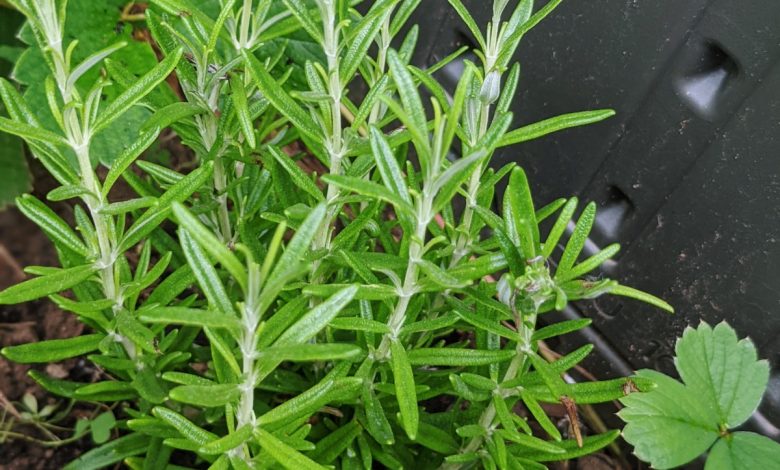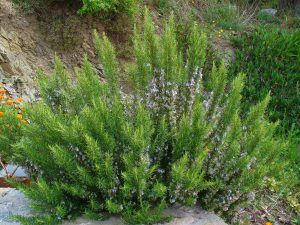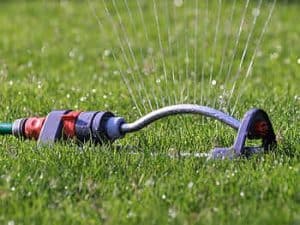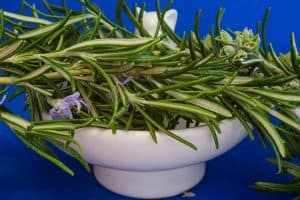Transplant Rosemary: [Steps to follow and Data to take into account]

Important points when transplanting Rosemary
 Where to sow? : In full light. It needs a lot of sunlight.
Where to sow? : In full light. It needs a lot of sunlight.- When? : At the end of spring and at the beginning of summer.
- How do we prepare the land?: Removed, eliminating weeds. With a substrate of peat moss and coarse sand.
- How do we water?: With drip.
- How often do we water?: In summer every 1 to 2 weeks. Do not water in the rainy season.
- Plagues and diseases? : Resistant. Mealybugs, mites, mealy bugs or scale may appear.
Rosemary, Rosmarinus officinalis, is a bushy, aromatic and woody plant that is relatively easy to grow, making it a good choice for any garden or home garden. It can be an annual (lasts only one year) or also perennial (lasts 3 or more years).
It has white, purple, or blue flowers and fragrant, leathery leaves that look like pine needles. It is a member of the Lamiaceae family, which includes many other plants (basil, lavender, sage). Rosemary is a plant that attracts bees as they enjoy its pollen.
Steps to follow to transplant rosemary
 Rosemary cultivation can be started from seed or cuttings. Generally, the use of seeds is difficult for a beginner and is only worthwhile on a large scale.
Rosemary cultivation can be started from seed or cuttings. Generally, the use of seeds is difficult for a beginner and is only worthwhile on a large scale.
It is preferable to grow it by cuttings, rather than sowing seeds, but seedlings can also be purchased, in case you do not want to propagate them by cuttings.
Although the seed is accessible and cheap, only 15 percent germinate normally. The steps to be followed to transplant rosemary are very simple:
- cut a cutting about 10 cm (4 inches) to spread them.
- Once cut, remove the leaves located in the lowest section of the cutting, (approximately 2.5 cm or 1 inch from the end of the stem). This part of the plant will go into the soil.
- Place each cutting in a small pot with two-thirds coarse sand and one-third peat moss (sphagnum).
- Locate the pot in a sunny spot, but not in direct sunlight.
- Water the cutting regularly and keep it in a warm place until roots form, which will take about 3 weeks.
- To help the cuttings sprout, the entire pot can be placed in a bag with a few holes in the top. This will regulate the temperature and keep the environment of the cutting moist and warm.
- Dip the tips of rosemary cuttings in powdered rooting hormone to speed up growth.
Important data to keep in mind when transplanting rosemary
care
 Rosemary, like many other aromatic plants, is not a plant that requires much care.
Rosemary, like many other aromatic plants, is not a plant that requires much care.
It grows in all types of soils, preferably arid, dry, somewhat sandy and permeable, adapting very well to poor soils. It grows in coastal and low mountain areas.
Time to grow it
The best time to grow it is in late spring, but in warm weather it can also be done in early fall. Rosemary plants can be harvested several times in a season, but they must be allowed to regenerate their growth between harvests.
Fertilizer
Rosemary rarely needs fertilizer. But if growth is slow or the plant appears stunted or pale yellow, all-purpose fertilizer should be applied once in the spring before new shoots appear. Avoid applying fertilizer directly to the plant because it can burn.
Irrigation
 Rosemary is not picky about watering. Ideally, water every 1 to 2 weeks, depending on the size of the plant and weather conditions.
Rosemary is not picky about watering. Ideally, water every 1 to 2 weeks, depending on the size of the plant and weather conditions.
In rainy areas or humid climates, the plant should not be watered, only in times of drought. Between each watering, it is recommended to let the rosemary plants dry out.
pests
It is a very pest resistant herb. If mites, mealy bugs or scale appear, you can use any organic or inorganic insecticide. If mealybugs do come out, spray the plants with water, pyrethrum soap, or a soap -based insecticide.
Ingredient in meals
 Rosemary’s characteristics, pungent flavor and pine -like aroma make it a popular ingredient in foods. Upright varieties are best, both for use fresh and dry.
Rosemary’s characteristics, pungent flavor and pine -like aroma make it a popular ingredient in foods. Upright varieties are best, both for use fresh and dry.
Pine-scented rosemary is best for cooking due to its excellent flavor and soft leaves. ‘Blue Boy’, ‘Spice Island’ and white rosemary varieties are also used in cooking.
cuts
Clippings can be used fresh or dried for later use. Fresh cuttings will retain their best flavor for 2-7 days in the refrigerator.
Storage
To store rosemary for longer periods, it is recommended to hang them in bunches to dry.
ornamental use
Rosemary ‘Arp’, ‘Dancing Waters’, ‘Golden Rain’, ‘Pink’, and white varieties are most often used as ornamentals.
Bibliography and references
- Obon de Castro, Concepcion. (1991). The medicinal plants of our region. Regional Publisher of Murcia. Murcia-Spain.
- Buczacki, Stefan. (1999). Garden herbs. Akal Editions. Madrid Spain.
- Alvarez-Herrera, Javier Giovanni; Lusardo Rodriguez, Santos; Chacon, Edinson. (2007). Effect of different cutting sizes and substrates on the propagation of rosemary (Rosmarinus officinalis L.). Colombian Agronomy Magazine. National university of Colombia. Bogota Colombia. Reproduced from: http://www.redalyc.org/articulo.oa?id=180320296004
- Alvarez-Herrera, Javier Giovanni; Balaguera-Lopez, Helber Enrique; Chacon Pardo, Edinson. (2010). Effect of the application of different layers and irrigation frequencies on the propagation of rosemary (Rosmarinus officinalis L.). Engineering and Research Magazine. National university of Colombia. Bogota Colombia. Reproduced from: https://www.redalyc.org/pdf/643/64312498016.pdf


![Photo of Kiri: [Cultivation, Irrigation, Care, Pests and Diseases]](https://www.complete-gardening.com/wp-content/uploads/2021/06/Kiri-390x220.jpg)
![Photo of Prune Kumquats: [Importance, Time, Tools, Considerations and Steps]](https://www.complete-gardening.com/wp-content/uploads/2021/06/Kumquats_1621092512-390x220.jpg)
